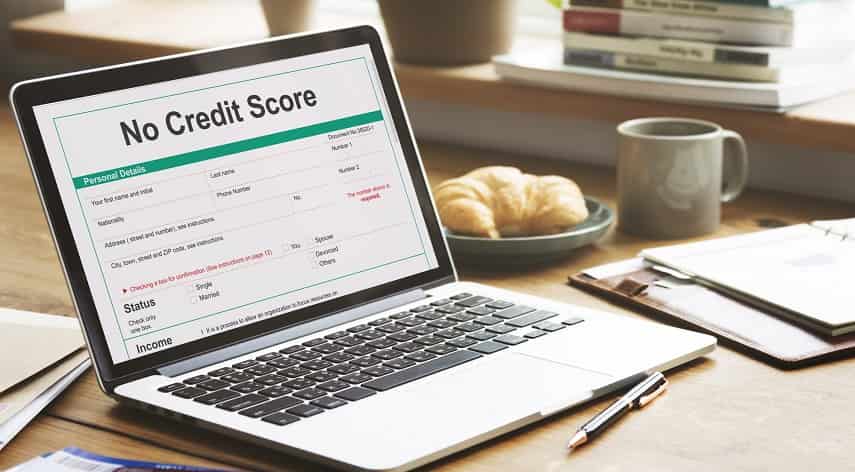No Credit vs. Bad Credit: What Are the Differences?

Are you interested in getting a car loan to purchase a car but need to know what your credit score is? Is it better to get a car loan with no credit vs. bad credit?
When purchasing a new car, getting a car loan is best to pay for the vehicle you want to buy. It helps you avoid paying the total amount upfront, giving you the advantage of saving money. But getting a loan from an auto dealership can be tricky if you have bad credit.
There are different credit ranges when it comes to taking out a loan. Knowing the differences between these ranges can help you understand what to expect. Here are the differences between no credit vs. bad credit when taking a loan. Read on.
Table of Contents
ToggleBad Credit and No Credit Overview
Bad credit means you have a history of not paying your debts on time or of not paying them at all. And a bad credit loan will show up on your credit report, which will lower your credit score. No credit means that you have no history of borrowing and repaying debt.
It can be because you’ve never taken out a loan or used a credit card or because you have a good history of paying your debts on time, but your credit report is simply blank. Having no credit is not necessarily bad, but it can make it harder to borrow money when you need it.
Improve Credit Score
Both extremes can improve their credit scores, and the main difference between the two is that no credit is much easier to improve than bad credit. Some of the bad credit advice is credit scores can improve by making on-time payments and paying off debt. It will take time and effort, but improving your credit score and getting approved for the financial products you need is possible.
The best way to boost your credit score on both extremes is to get a credit card and use it responsibly. It will show that you are a reliable borrower and help improve your credit score. If you have each of this two, it is good to learn about improving it.
For no credit, you can start building your credit score. And persons with bad credit try to rebuild instead of making it. Unlike persons with no credit, bad credit has an existing credit report.
Meanwhile, there are other ways to improve your credit score. Look for a co-borrower to sign your loan.
You can get a credit card for college students or be an extension credit user. It is to become an authorized user on someone else’s credit card with a good credit history.
And last is the credit builder loans. It is the most expensive route to build your credit. With this type of loan, the lender keeps the funds you borrow until you have paid the principal amount plus the interest.
Then, you will have several months of good payment records appearing on your credit reports. Just be reminded that the lender must acknowledge reporting the account to credit bureaus before you apply.
Interest Rates and Credit Limit
Higher interest rates and fees are one of the bad credit disadvantages. It is because lenders view borrowers with loans as being high-risk. As a result, they will charge higher interest rates to offset the risk of lending to you.
They may also require you to pay additional fees. In contrast, having no credit usually won’t impact your borrowing costs as much. Lenders see you as a lower-risk borrower since you don’t have a history of borrowing and repayment.
As a result, you can get a loan with more favorable terms, such as a lower interest rate.
Impact on Credit Report
There are a few critical differences between no credit and bad credit. Bad credit can stay on your credit report for up to 7 years, whereas no credit will usually only impact your score for a short time. In addition, bad credit can make it challenging to get approved for loans or credit cards and lead to higher interest rates.
On the other hand, no credit means you have no history of borrowing and repaying the money. It can make it challenging to get credit approval, but once you build up a history of responsible lending, your credit score will improve.
Difficulty in Getting a Loan
When a person has no credit, this means that the person has no borrowing history. It can make it challenging to get a loan because lenders need to gauge how likely the borrower is to repay the loan. Having bad credit means the borrower has a history of not repaying loans on time.
It can make it challenging to get a loan because lenders are reluctant to lend money to someone with a history of not repaying loans.
No Credit vs. Bad Credit
If you’re trying to decide whether to take on debt with a no credit vs. bad credit history, it’s essential to understand the difference between the two. No credit means you have no borrowing account, while bad credit means you have a history of making late payments or defaulting on loans. No credit is a better option, but chances are still available if you have bad credit.
Talk to a financial advisor to learn more about your options and make the best decision for your financial future.
If this article has helped you, check out our other blogs!
Alfred Williams, a distinguished business writer, navigates the corporate landscape with finesse. His articles offer invaluable insights into the dynamic world of business. Alfred's expertise shines, providing readers with a trustworthy guide through the complexities of modern commerce.
Recommended For You
Spread the loveIn the ever-expanding digital landscape, online trading platforms have become a staple for savvy consumers looking to explore
Spread the loveDo you find tax season overwhelming? You’re not alone. But don’t worry; our article on tax checklist essentials has you
Spread the loveNavigating the world of document signing and validation can be perplexing. This is especially true when it comes



